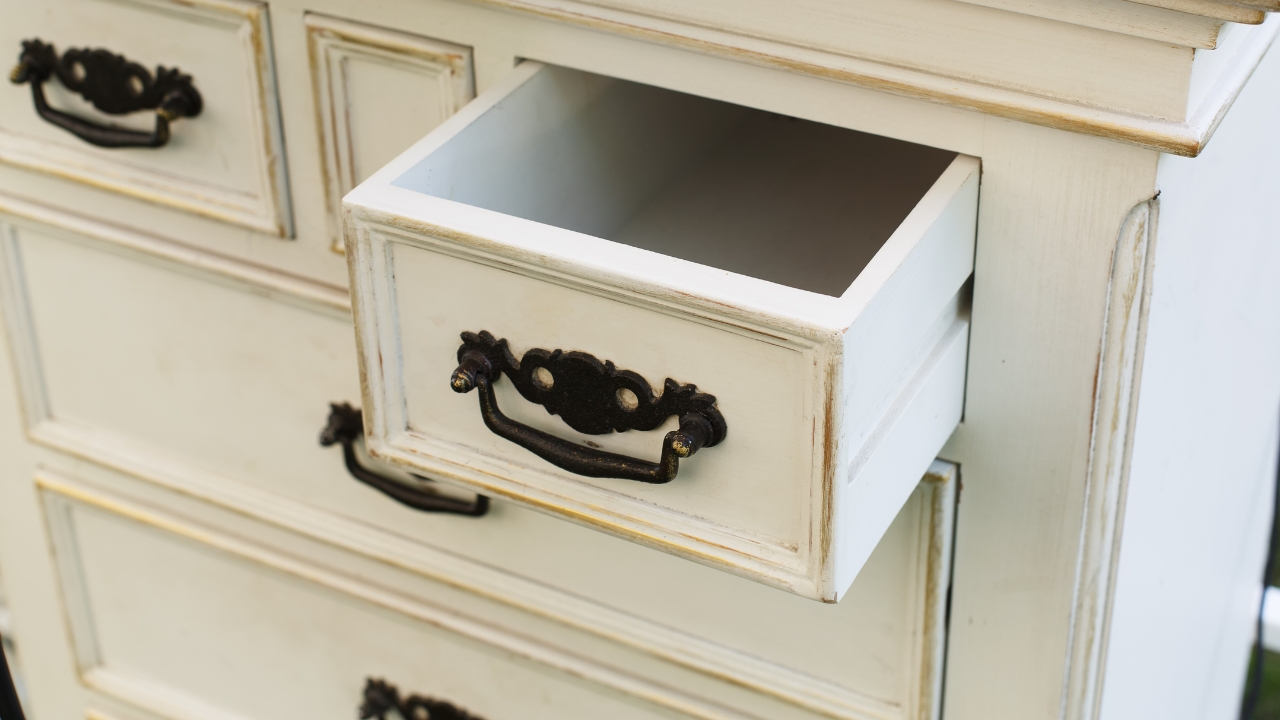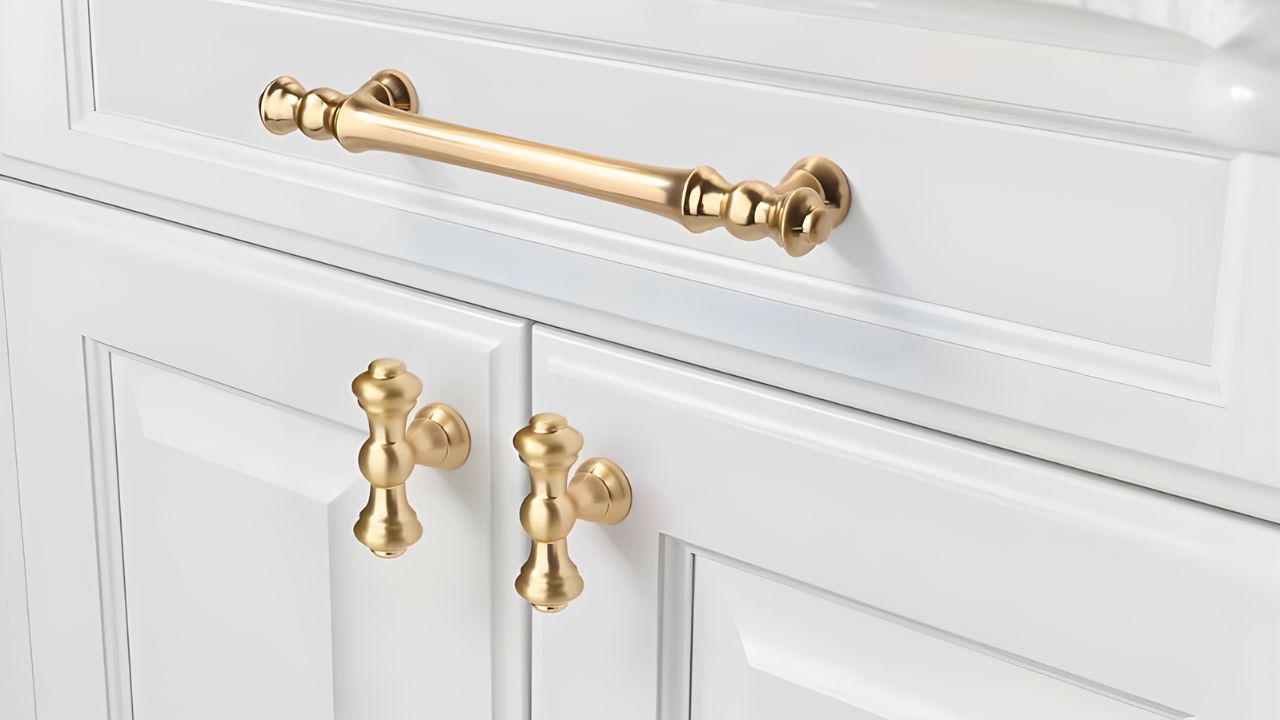Do you have the wrong hardware on you furniture?
You can have a beautiful dresser, a solid wood nightstand, or a custom-built cabinet—but if the hardware doesn’t match the piece, something always feels off. It’s subtle, but once you see it, you can’t unsee it.
The style might clash, the color might be dated, or the size might feel awkward. Hardware is one of those finishing touches people underestimate until it quietly ruins an otherwise great setup.
Hardware carries more weight than you think

Hardware acts like the jewelry of your furniture. It pulls everything together—or it doesn’t. A modern black pull on a vintage oak dresser can feel harsh and disconnected, while an ornate knob on a clean-lined cabinet looks out of place. The shapes, finishes, and even the way the light hits them all affect how your furniture reads in the room.
When hardware looks wrong, it usually means it doesn’t match the furniture’s character or the room’s tone. It’s not always about being trendy. Sometimes, a simple brass knob looks timeless because it respects the material it’s paired with.
Scale and proportion make or break the look
A lot of people overlook proportion. Oversized handles on a delicate nightstand look cartoonish. Too-small knobs on a wide dresser make it feel unfinished. The rule of thumb: the larger or heavier the drawer, the more substantial the handle should be.
For wide drawers, bar pulls that extend two-thirds across the face tend to look balanced. On smaller drawers, single knobs work better. You don’t have to measure to the millimeter, but pay attention to what feels centered and intentional instead of slapped on.
Finish matters more than color matching
You might think every piece of hardware in a room has to match exactly, but that’s not true. What matters is that the finishes complement each other. Warm finishes like brass, bronze, or champagne gold pair nicely with wood tones and neutral paint. Cooler finishes—nickel, chrome, or black—work better with crisp whites, grays, or modern spaces.
If you’re mixing finishes, do it on purpose. For example, you could use black knobs on your kitchen cabinets but brushed brass handles on the drawers to give it dimension. The key is balance. Pick one finish as your main tone and use the other as an accent, not a random add-on.
Don’t forget texture and shape
Hardware isn’t all about color. The texture and shape change the entire feel of a piece. Smooth, rounded pulls make a room feel softer. Sharp, square designs feel modern and bold. Even something as small as a ridged grip or hammered surface can completely shift the mood.
If your furniture feels flat, textured hardware might be what it’s missing. If the room already has a lot going on—busy grain, patterned rugs, bold décor—smooth and minimal hardware helps calm it down.
Trends change fast, so go timeless when you can
It’s tempting to grab the latest matte black or brushed gold handles because they’re everywhere, but that’s how rooms start to look dated a year later. If you’re unsure, look at the materials that have stood the test of time—aged brass, oil-rubbed bronze, or polished nickel. They’ve been around for decades for a reason.
That doesn’t mean you can’t go trendy. Just avoid pairing multiple “statement” finishes in the same space. A single modern touch works best when everything else supports it.
Pay attention to installation
Even the right hardware can look wrong if it’s installed poorly. Crooked lines, uneven spacing, or knobs that spin loosely cheapen the look instantly. If you’re upgrading existing furniture, fill and sand the old holes before drilling new ones so you’re not stuck with awkward spacing.
For cabinets, double-check your alignment with a template. It takes an extra few minutes but saves you from living with slightly uneven handles that you’ll notice every time you open a drawer.
When hardware upgrades are worth it

If you’ve refinished furniture or painted cabinets, new hardware is nonnegotiable. It completes the project and makes the piece look finished. Old hardware, especially if it’s tarnished or doesn’t match your new finish, can make even fresh paint look tired.
Swapping hardware is one of the cheapest ways to make a huge visual difference. You don’t need to replace furniture—you can completely change how it feels with a few new pulls or knobs.
The small detail that changes everything
Your furniture can have great lines, beautiful color, and solid construction, but hardware is what ties it all together. It’s the handshake between the piece and the room—if it’s wrong, nothing feels cohesive.
Before you buy new furniture or start another DIY project, look at what’s already there. The answer might not be another coat of paint or a total replacement. It might be a handful of screws and the right hardware that finally makes everything click.
Like Fix It Homestead’s content? Be sure to follow us.
Here’s more from us:
10 things that make your house feel less welcoming without saying a word
10 Upgrades That Make Your House Look Fancier Than Your Neighbor’s
*This article was developed with AI-powered tools and has been carefully reviewed by our editors.







